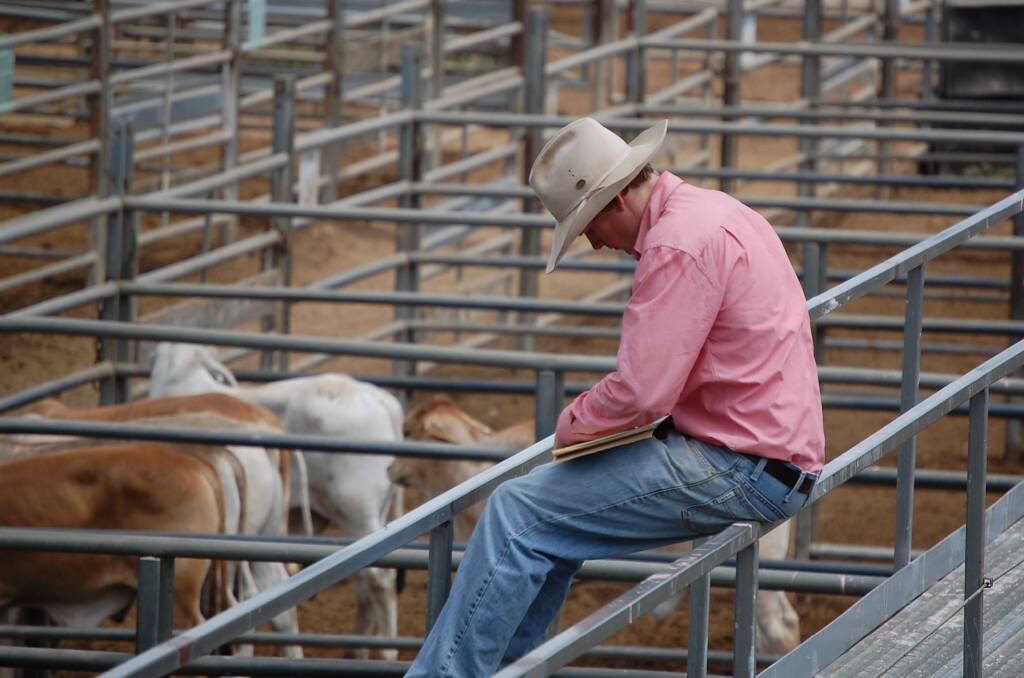
THE steep slippery slide young cattle prices were on during November is not tipped to continue into the new year and in fact, some analysts are touting a slight upward creep in the market.
Subscribe now for unlimited access to all our agricultural news
across the nation
or signup to continue reading
While the price softening did continue this past week across most categories, it has been at a far less dramatic rate and the Eastern Young Cattle Indicator did display some upward movement.
Most cattle market commentators are happy to put their name to the word 'stablising' at the moment, however the point has been made that last year there was a late rush to offload right before Christmas which pushed prices down, so 'anything is possible'.
Meat & Livestock Australia's senior market information analyst Ripley Atkinson said the big dip had been supply driven, and where the EYCI finishes now would rest on how much comes onto the market in the final days of 2022.
"There's no necessity, as a general rule of thumb, for people to offload. Feed, water and grain is readily available and will be for at least the next six months," he said.
Matt Dalgleish, Episode3 analyst, said the November sell-off was what was needed for those parts of the supply chain past the farmgate who had been struggling to catch their breath.
"But perhaps now it is a bit overdone," he said.
"It's raining again in the south. There will be good quality grass into the new year and the one thing that will get producers active again will be seeing feed taking off.
"It won't be a big rally but in the first quarter, pricing might come back up a bit."
ALSO IN BEEF:
Rebuild continues
The rebuild has plenty more juice in it, agents and analysts say, with plenty of paddocks still understocked.
"Keep in mind, the rebuild took a long while to present itself and we now have more capacity in feedlots so potentially there is space for an extra few million head in the paddock than there was at previous herd peaks," Mr Dalgleish said.
Most analysts believe there is still nine months to a year worth of rebuilding; and therefore it won't be until post 2023 winter that the longer-lasting, continual cattle price decline kicks in.
"Around quarter three and four, producers will likely be starting to think a third year of really good seasonal conditions is unlikely," Mr Dalgleish said.
That will coincide with sustained increased supply as 'rebuild' cattle hit marketing weights in greater numbers.
Rabobank senior animal protein analyst Angus Gidley-Baird said with La Nina persisting and the Indian Ocean Dipole remaining negative, most areas of Australia were expected to have average to above average rainfall into 2023.
"Such favourable conditions will support the upward growth in livestock inventory numbers," he said.
Cattle numbers had not recovered as quickly as sheep numbers, and with good pasture availability in northern areas, cattle producers would still be looking to grow their herds, he said.
Consumer demand, however, was showing signs of softening, Rabobank reports.
While still historically high, import prices for Australian beef into key markets has declined since early this year, Mr Gidley-Baird said.
"This is cutting margins for the post-farmgate operators in the supply chain. In addition to the challenges of accessing labour, thin margins provide no incentive to increase volumes or pay higher prices for cattle," he said
"At some point, these two markets - the production market and the consumption market - will collide and livestock prices will correct downwards."
Rural Bank's Australian Agriculture Outlook 2023 report says the same about good rainfall keeping restockers going in the first half of 2023 but does predict a 'marginal' fall in prices simply on the back of more supply.
The forecast rise in supply should lead to more competitive pricing encouraging domestic beef consumption, though inflationary pressures would likely weigh on consumer spending across higher-end beef products, the report said.


